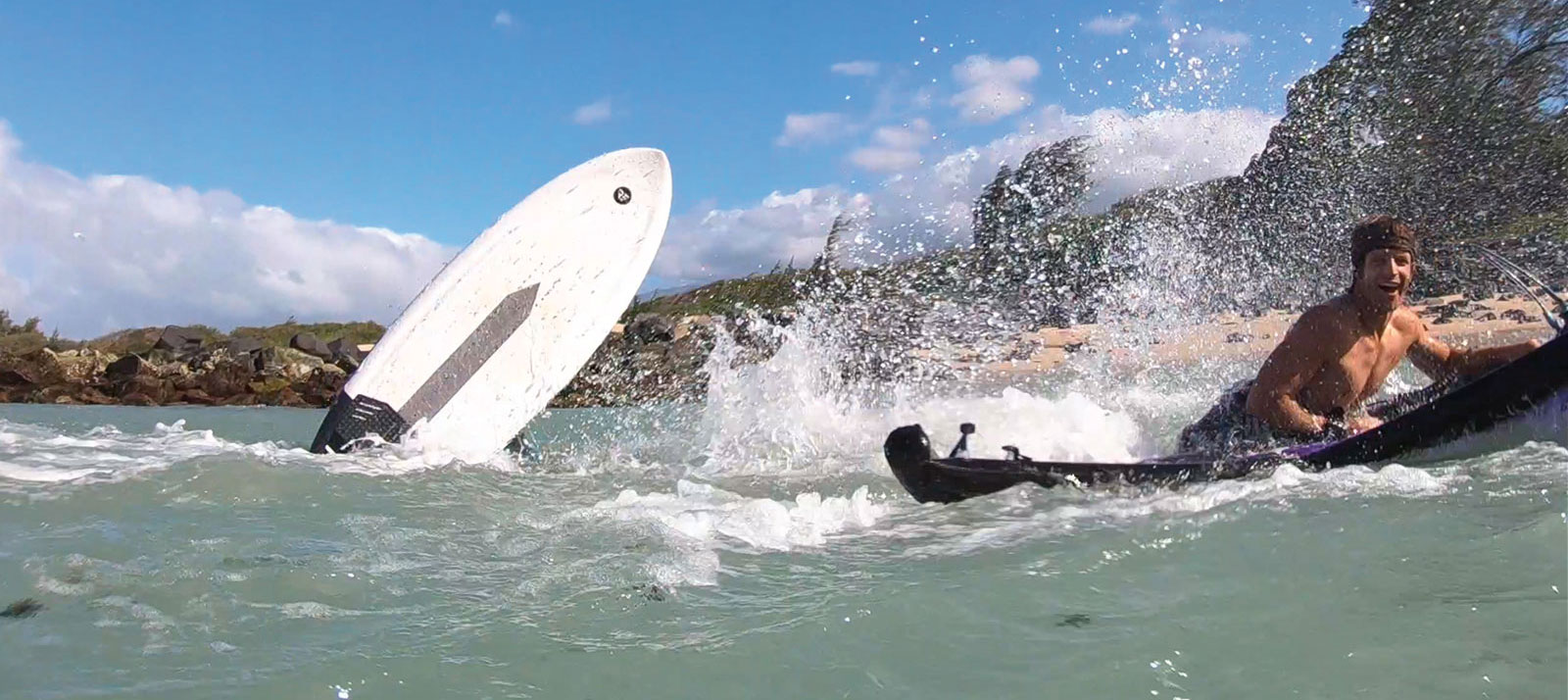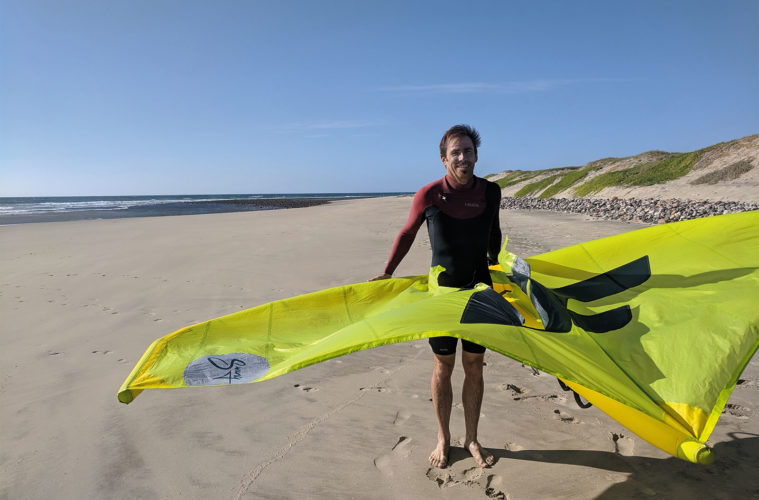Featured in our Foil Instructional Guide, our staff brakes down the top five mistakes to avoid while learning to wingsurf. Give this a quick read and save yourself a few snafus.
Sharp wings and ripstop don’t mix
When you want to stash your wing on the beach before or after a session, the most obvious solution is to secure the wing’s wrist leash to the board’s foil mast or fuselage and walk away. Then comes along an extra strong gust or slight change in wind direction that flips the board over and sends your foil wing slicing through your wing’s canopy (this tragedy has occurred more often than any of us would like to admit). To avoid this painful mistake, never leave your foilboard with the deck down and foil wing sticking up in the air and never attach your wing’s wrist leash directly to any of the foil spars. Instead, place the foilboard on its side with the
nose into the wind and the foil wing buried in the sand, turn the inflatable wing upside down (boom facing up) and attach the wrist leash to the end of your board’s leash to give your wing a safety cushion and a longer life.
Underinflating ruins sessions and equipment
Sometimes when you’re in a hurry or when your pump is on its last leg you might be tempted to leave your wing a hair bit under-inflated. Most brands have recommended PSI ratings and these are important minimums you need to maintain to get the most performance from your wing. An under-inflated wing won’t be able to hold the power of the wind; the leading edge will fold together when you sheet in and the boom will crease and bend near your back hand. Not only will you lose most of the wing’s power, the creases will cause extra stress on your wing’s seams and potentially lead to premature failure. Always inflate your wing
to the recommended PSI and maybe a little extra for good measure.
Size matters (when it comes to boards)
It’s always nice to be the cool kid on the beach with the super small board and the perfect tan, but purchasing that sexy sinker board right off the bat will send your blood pressure through the roof and make your voice go hoarse from wildly yelling expletives into the wind. Choose a board size with generous volume to start with that will get you on the water in a wide array of conditions and help you master all the basic moves. Increasing your time on the water early on will pay dividends to your learning curve and in time you will have not only that sexy race car of a board but also the moves to go along with it.
Don’t forget your lifeline
Don’t try to wingsurf without a board leash, just don’t. Trust us. Body dragging with a wing is not a thing and when you get separated from your board a mile off from the beach, using the wing to catch up with your foilboard will not be easy. When you add wind and some swell, foilboards can begin to ghost foil. In wingsurfing the board is both your lifeline and self-rescue vehicle””you don’t ever want to get separated from it.
Keep your wingtips dry
One of the biggest challenges to riders of all levels is keeping your wing’s wingtip from dragging in the water. We’ll say it here, and say it again until it sticks, you need to come up with a muscle-memory strategy to keep your wing’s tip from hitting the water while riding. If you value an ounce of prevention, you should focus on keeping the wing higher in the wind window at all times (yes, wings have a wind window). If you prefer to pay pounds of cure, teach yourself to thrust your back hand and the back of the boom towards the water the second you feel the tip dragging. An aggressive downward motion causes an immediate upward release from the water so your ride can continue if you religiously apply these little tricks.

Want more tips and tricks on foiling skills and technique? For everything from gear tech to getting a leg up on your first wingsurfing sessions, get our new Foil Instructional Guide.




